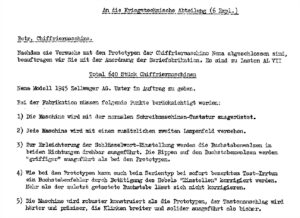
Nema – a Swiss cipher machine
During the Second World War, Switzerland developed a better cipher machine than Enigma: Nema.
Demonstration of a German Enigma device. Youtube




The Nema manual, which came out in 1948. Swiss Federal Archives

During the Second World War, Switzerland developed a better cipher machine than Enigma: Nema.



